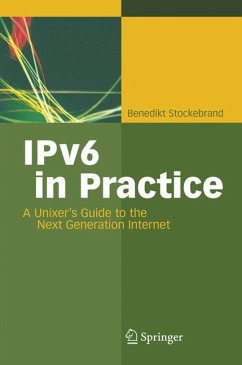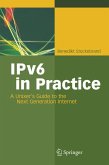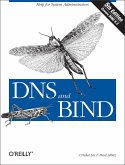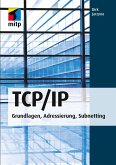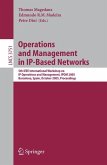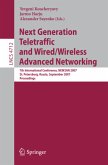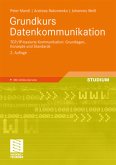Handling IPv6 for the first time is a challenging task even for the experienced system administrator. New concepts and mechanisms make it necessary to rethink well-established methods of the IPv4 protocol.
This book is a practical guide to IPv6 addressing Unix and network administrators with experience in TCP/IP(v4) but not necessarily any IPv6 knowledge. It focuses on reliable and efficient operation of IPv6 implementations available today rather than on protocol specifications. Consequently, it covers the essential concepts - using instructive and thoroughly tested examples - on how to configure, to administrate, and to debug IPv6 setups. These foundations are complemented by discussions of best practices and strategic considerations aimed at overall efficiency, reliability, maintainability, and interoperation.
The examples in this book cover all relevant aspects concerning Debian GNU/Linux, FreeBSD, and Solaris. Examples about other Unix derivatives are available online at www.benedikt-stockebrand.de.
Hinweis: Dieser Artikel kann nur an eine deutsche Lieferadresse ausgeliefert werden.
This book is a practical guide to IPv6 addressing Unix and network administrators with experience in TCP/IP(v4) but not necessarily any IPv6 knowledge. It focuses on reliable and efficient operation of IPv6 implementations available today rather than on protocol specifications. Consequently, it covers the essential concepts - using instructive and thoroughly tested examples - on how to configure, to administrate, and to debug IPv6 setups. These foundations are complemented by discussions of best practices and strategic considerations aimed at overall efficiency, reliability, maintainability, and interoperation.
The examples in this book cover all relevant aspects concerning Debian GNU/Linux, FreeBSD, and Solaris. Examples about other Unix derivatives are available online at www.benedikt-stockebrand.de.
Hinweis: Dieser Artikel kann nur an eine deutsche Lieferadresse ausgeliefert werden.
From the reviews: "The focus of the book is clear: to give the reader step-by-step guidance on the setup of all the major functions surrounding the installation and use of IPv6 on Unix Systems. ... This book is definitely targeted at those who want to learn how to use IPv6. Therefore, not only large network administrators and academics may be interested, but also small office/home office (SOHO) network administrators and enthusiastic techies. These readers will surely find the solution to their needs inside this convenient and practical book." (Damien Magoni, ACM Computing Reviews, Vol. 49 (5), 2008)

